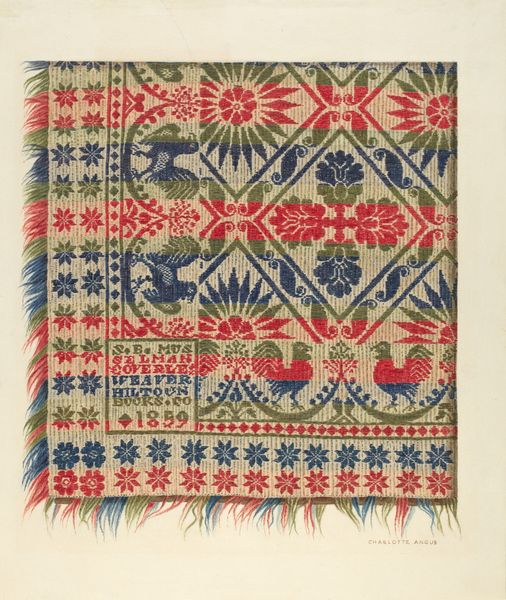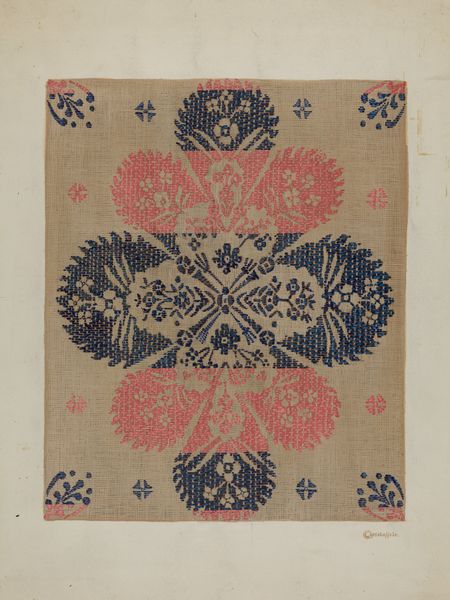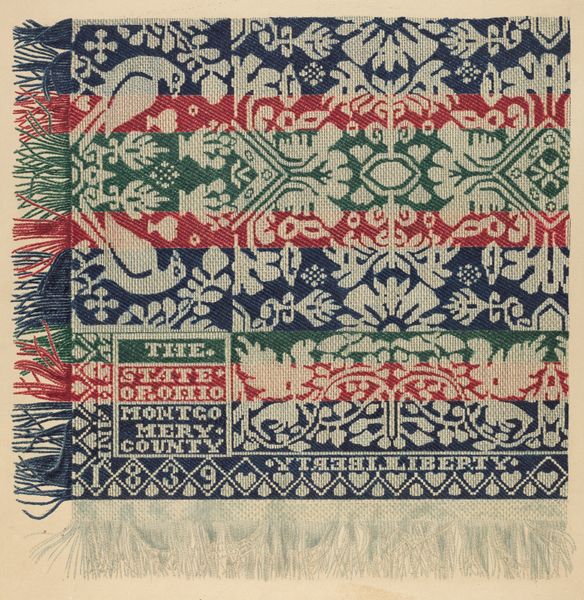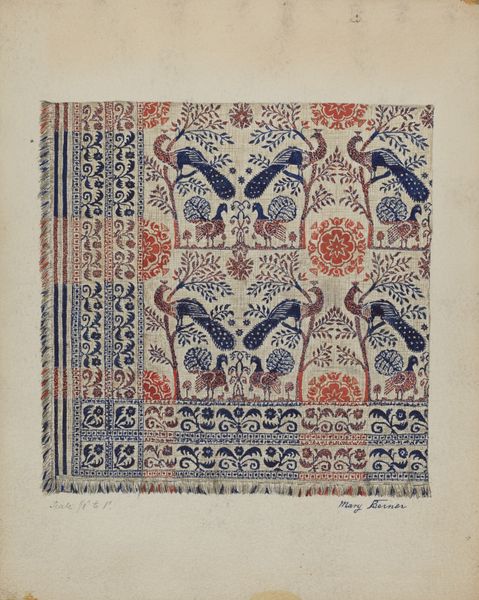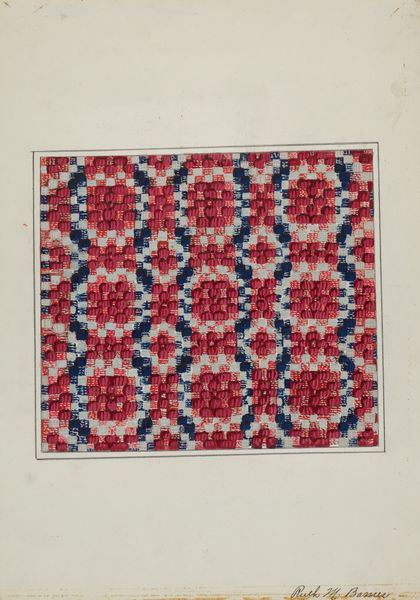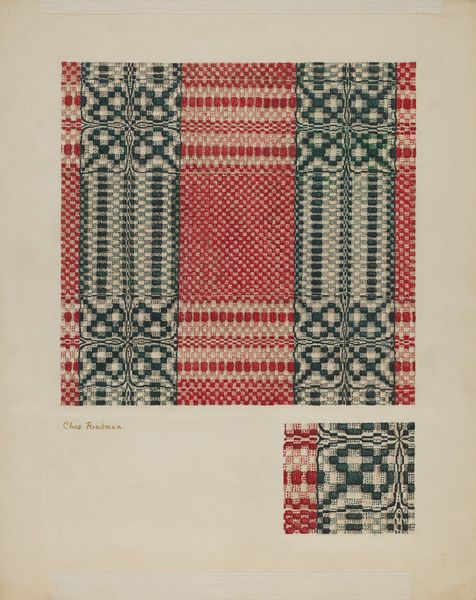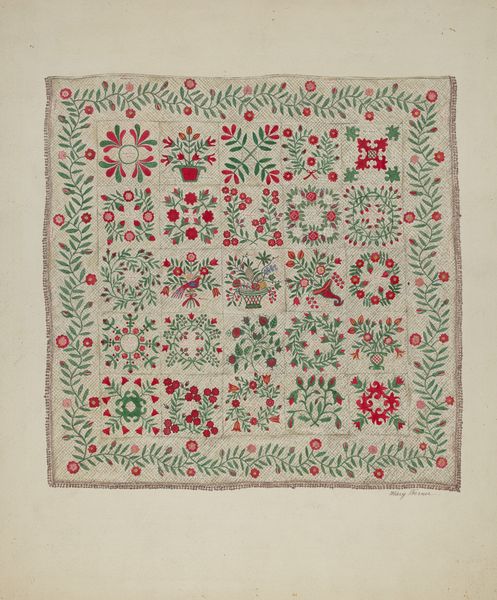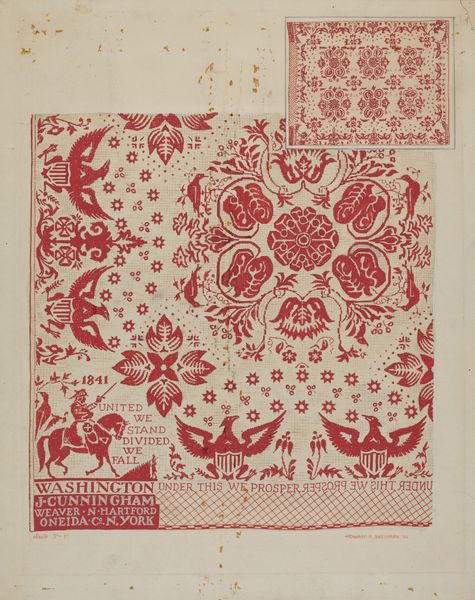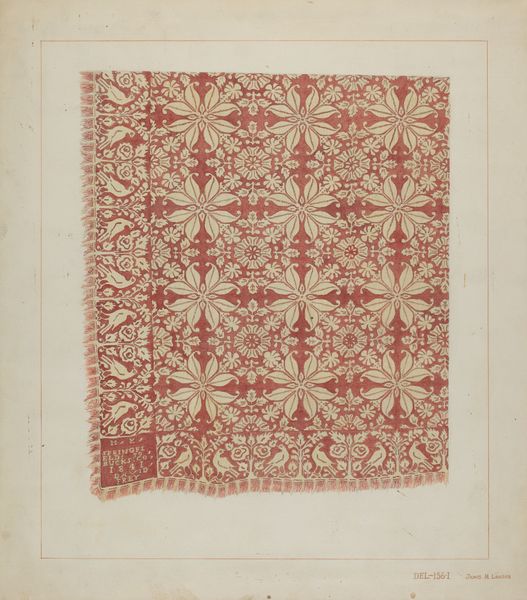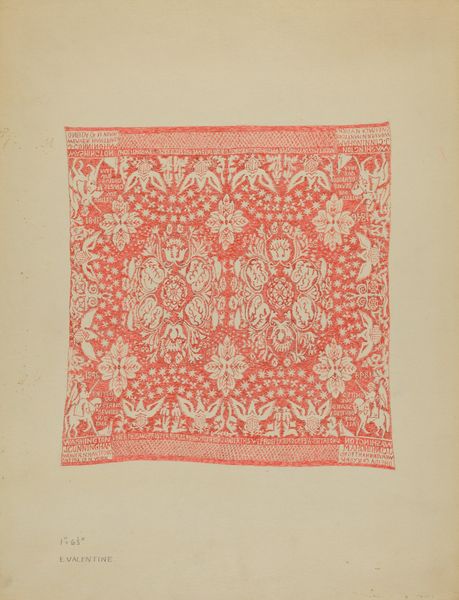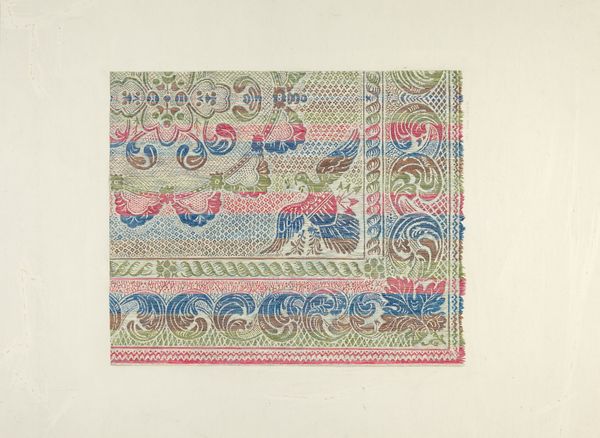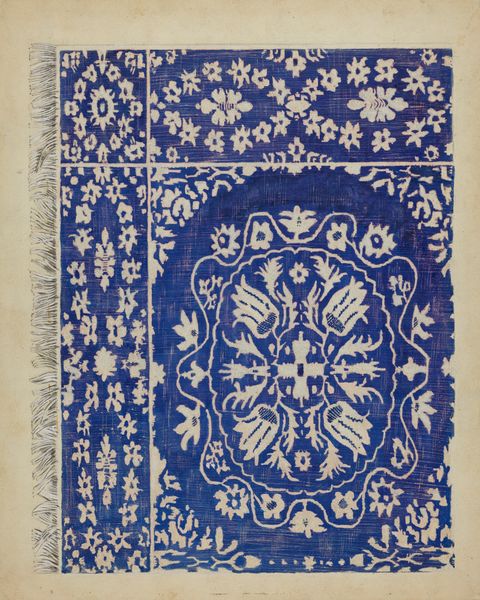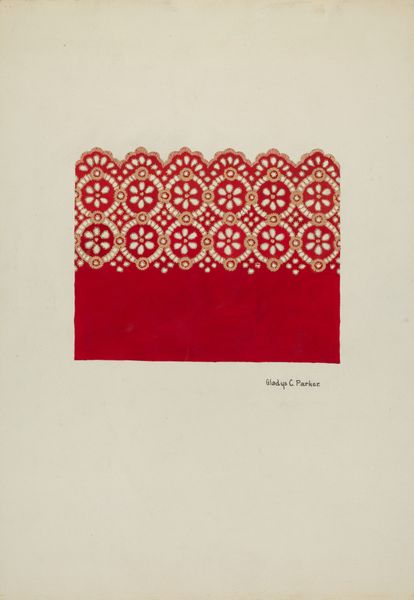
drawing, paper
#
drawing
#
natural stone pattern
#
fashion and textile design
#
paper
#
repetition of pattern
#
vertical pattern
#
regular pattern
#
pattern repetition
#
textile design
#
imprinted textile
#
layered pattern
#
funky pattern
Dimensions: overall: 32 x 28.2 cm (12 5/8 x 11 1/8 in.) Original IAD Object: 87 1/2" wide; 103" long
Copyright: National Gallery of Art: CC0 1.0
Curator: This vibrantly colored rendering catches the eye immediately. We're looking at "Coverlet," a textile design attributed to Rex F. Bush around 1937. Editor: Yes, its intensity is striking. The chromatic interplay between the bold reds, blues, and greens feels so deliberately folk-inspired. Is there a connection with traditional weaving practices? Curator: Undoubtedly. Its adherence to strict, geometric patterning suggests an embrace of historical design principles, evident even in the fringe. This suggests Bush was intrigued by the structure of coverlet weaving traditions, as each individual pattern sits nested in place next to the other. Editor: I see the repetition, which to me hints at themes of community and craft production, given textiles' frequent ties to communal labor, especially women's labor. I imagine families gathering and crafting items. The names "David Stauch" and "Rebecca Meller" and the year 1846 woven into the pattern imply this piece commemorates an historical artifact connected to specific lives. It is clearly a reproduction of some kind, likely a commemorative object rendered much later. Curator: The symmetry, however, presents a rigorous order. It establishes a clear visual hierarchy with that centered inscription of names. Are you not captivated by the way those visual relationships direct our eye? It seems a commentary on production but more so on composition, color theory, balance. Editor: While you're focused on artistic elements, I cannot separate them from that layered narrative! What were David and Rebecca's lives like? Why memorialize them this way in 1937? Perhaps a resurgence of interest in traditional crafts as a means of connecting to the past amidst industrialization or social disruption? Curator: True, there could have been personal intentions within its production that add resonance. Its geometric regularity lends to that effect too, implying consistency through reproduction, though it still carries a feeling of warmth and human creation in its very rendering by Bush. Editor: Yes, in considering craft and labor, there is power in Bush preserving the craft with hand. What a fascinating encounter this piece facilitates! Curator: I agree completely. It seems every moment examining its visual composition opens pathways to new perspectives on historical practice and personal meaning.
Comments
No comments
Be the first to comment and join the conversation on the ultimate creative platform.
